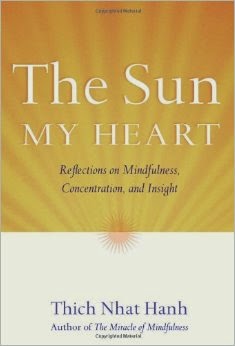§ Many were the times when people would tell Ajaan Fuang that ― with all the work and responsibilities in their lives ― they had no time to meditate. And many were the times he'd respond, "And you think you'll have time after you're dead?"
§ "When the mind's not quiet ― that's when its poor and burdened with difficulties. It takes molehills and turns them into mountains. But when the mind is quiet, there's no suffering, because there's nothing at all. No mountains at all. When there's a lot to the mind, it's simply a lot of defilement, making it suffer."
§ One meditator noticed that his practice under Ajaan Fuang was making quick progress, and so he asked what the next step would be. "I'm not going to tell you," Ajaan Fuang said. "Otherwise you'll become the sort of amazing marvel who knows everything before he meets with it, and masters everything before he's tried his hand. Just keep practicing and you'll find out on your own."
§ Another student disappeared for several months, and on her return told Ajaan Fuang, "The reason I didn't show up is that my boss sent me to night school for a semester, so I didn't have any time to meditate at all. But now that the course is over, I don't want to do anything but meditate ― no work, no study, just let the mind be still."
She thought he'd be pleased to hear how intent she still was on meditating, but he disappointed her. "So you don't want to work ― that's a defilement, isn't it? Whoever said that people can't work and meditate at the same time?"
§ "Meditating isn't a matter of making the mind empty, you know. The mind has to have work to do. If you make it empty, then anything ― good or bad ― can pop into it. It's like leaving the front door to your home open. Anything at all can come strolling right in.
§ "When the meditation goes well, don't get excited. When it doesn't go well, don't get depressed. Simply be observant to see why it's good, why it's bad. If you can be observant like this, it won't be long before your meditation becomes a skill."
CONTEMPLATION
§ A meditator in Singapore once wrote a letter to Ajaan Fuang, describing how he applied the Buddha's teachings to everyday life: Whatever his mind focused on, he would try to see it as inconstant, stressful, and not self. Ajaan Fuang had me write a letter in response, saying, "Do things ever say that they're inconstant, stressful, and not self? They never say it, so don't go faulting them that way. Focus on what labels them, for that's where the fault lies."
§ "Even though your views may be right, if you cling to them you're wrong."
§ One of Ajaan Fuang's students told him that she had reached the point in her meditation where she felt indifferent to everything she encountered. He warned her, "Sure, you can be indifferent as long as you don't run into anything that goes straight to the heart."
§ "Whatever dies, let it die, but don't let the heart die."
Excerpts from: Awareness Itself
Ajaan Fuang Jotiko
Compiled and Translated by
Thanissaro Bhikkhu (Geoffrey DeGraff)
~
Source: http://www.accesstoinsight.org/lib/thai/fuang/itself.html#top




















